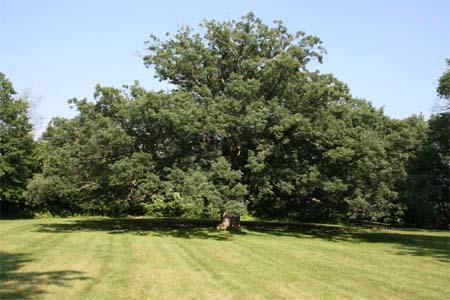
One-fourth of the United States’ oak species are now considered of conservation concern, according to data compiled by researchers at The Morton Arboretum for the latest update of the International Union for Conservation of Nature (IUCN) Red List of Threatened Species™. Sixteen species of oaks, all in the southern and western U.S., are now classified as Critically Endangered, Endangered, or Vulnerable on the IUCN Red List, with another four species deemed Near Threatened. This proportion of threatened species within a taxonomic group is similar to threat levels for birds and mammals.
Released today, the Red List of US Oaks publication details for the first time the distributions, population trends, and threats facing all 91 native oak species in the U.S., including updated versions of previously published assessments. The publication serves as a baseline for current understanding of the state of the country’s oak trees and an authoritative guide for future conservation action.
Known as keystone species, oaks in North America have more biomass and number of species than any other tree group; they are the backbone of many different forest communities and provide immeasurable ecosystem services. Yet, oak-dominated ecosystems have been in decline for the past century. The threats facing U.S. oak species include pests and diseases, habitat destruction, development, and agriculture. Notably, longevity and slow reproductive rates of oaks make them particularly susceptible to the effects of a rapidly changing climate. Until this report, it was not known exactly how many oak species in the U.S. were in danger of extinction using IUCN Red List methodology.

